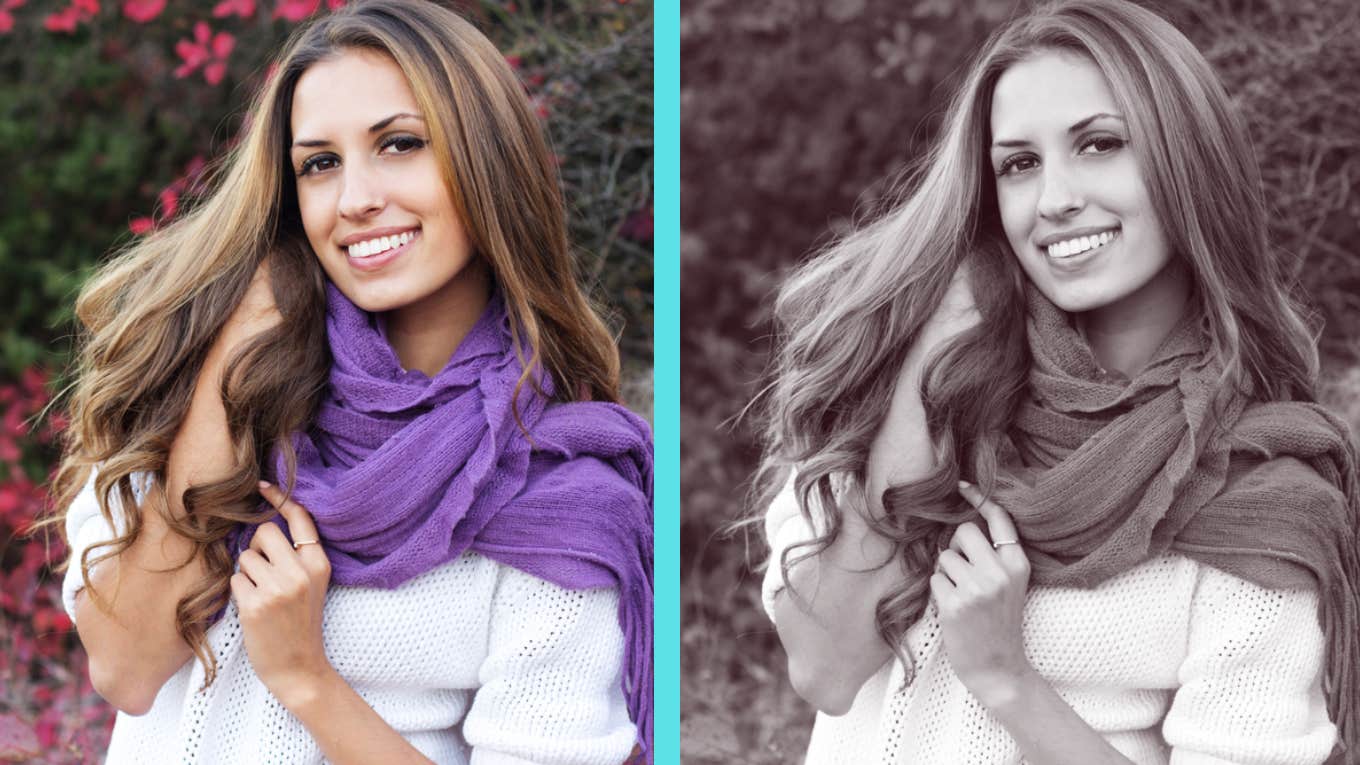A Study Explains Why We All Choose The Same 'Attractive' Woman When Shown Specific Side-By-Side Images
The photos depict the same woman, but one of them stands out for a reason we never would have expected.
 PonomarenkoNataly / Shutterstock
PonomarenkoNataly / Shutterstock A study that focused on peoples’ reactions to photographs of two women side-by-side produced compelling results. Participants were presented with two photographs and asked to choose which woman they perceived to be more attractive.
What some of them failed to realize is that both photographs depicted the same women — they were just taken at different times of the month, and the explanation as to why they looked so different was astounding.
According to the study, the woman appears to be different because facial features can change during ovulation.
The study was detailed in the article, “Men's Preference for the Ovulating Female is Triggered by Subtle Face Shape Differences,” published by the academic journal Elsevier, and was expanded upon by TikTok user @marypatross, using side-by-side photos of women when they are ovulating versus when they are not.
Ovulation is a process that occurs during a woman’s menstrual cycle when a mature egg is released from the ovary. It is the pivotal moment in a woman's cycle when she is at her most fertile and the chance of conception is high. If a released egg is fertilized, it will travel to the uterus and implant, resulting in a pregnancy. If the egg is not fertilized, it will dissolve and be shed with the uterine lining during menstruation.
While a woman is ovulating, she may experience a range of symptoms including breast tenderness, a boost in libido, mood changes, and mild abdominal pain. Most of these are common and something women are well aware of. The subtle changes in facial appearance that occur during ovulation aren't as widely talked about, however. And according to the study, this fertile time of the month actually increases a woman's attractiveness due to the increase in “facial redness” during peak fertility periods.
"Women do not advertise ovulation but they do seem to leak information about it,” Dr. Hannah Rowland from the University of Cambridge told India Today. “Previous studies have shown they are seen [as] more attractive by men when ovulating.”
The study that Mary focuses on in her video is one where people are shown side-by-side photos of the same woman, one that was taken during ovulation and one that wasn’t.
When asked which photo they preferred, nearly 100% of the time people favored the photo with the woman ovulating.
Mary, who is also a Ph.D. student in Psychology, explains that a woman’s level of “objective attractiveness” ebbs and flows throughout her monthly cycle, changing her facial features.
And many women in the comments section agreed with the findings. “I knew I wasn’t tripping when I felt more attractive when I’m in the middle of my cycle!” one TikTok user commented. “People think that I’m nuts for planning vacations and photoshoots while I’m ovulating,” another user shared.
So, what is the exact science behind the bodily phenomenon?
Medical experts claim that as estrogen levels increase during ovulation, blood flow increases and widens the blood vessels. Therefore, more blood is making it to your face and is more noticeable on the skin’s surface.
It is not only our faces that undergo a noticeable change. Research has also shown that a woman’s voice increases in pitch, their body odor becomes more appealing, and they are more flirtatious in the presence of people they find attractive.
While it is no secret that we may not feel our best while we are on our periods, many women feel their greatest during ovulation. And a study from 2021 even found that women are more creative during ovulation!
It's the time of the month when women may find themselves feeling more radiant and carefree, exuding confidence, which is also known to attract people and turn heads. So when people say that you’re “glowing” during ovulation, they really mean it!
Megan Quinn is a writer at YourTango who covers entertainment and news, self, love, and relationships.
